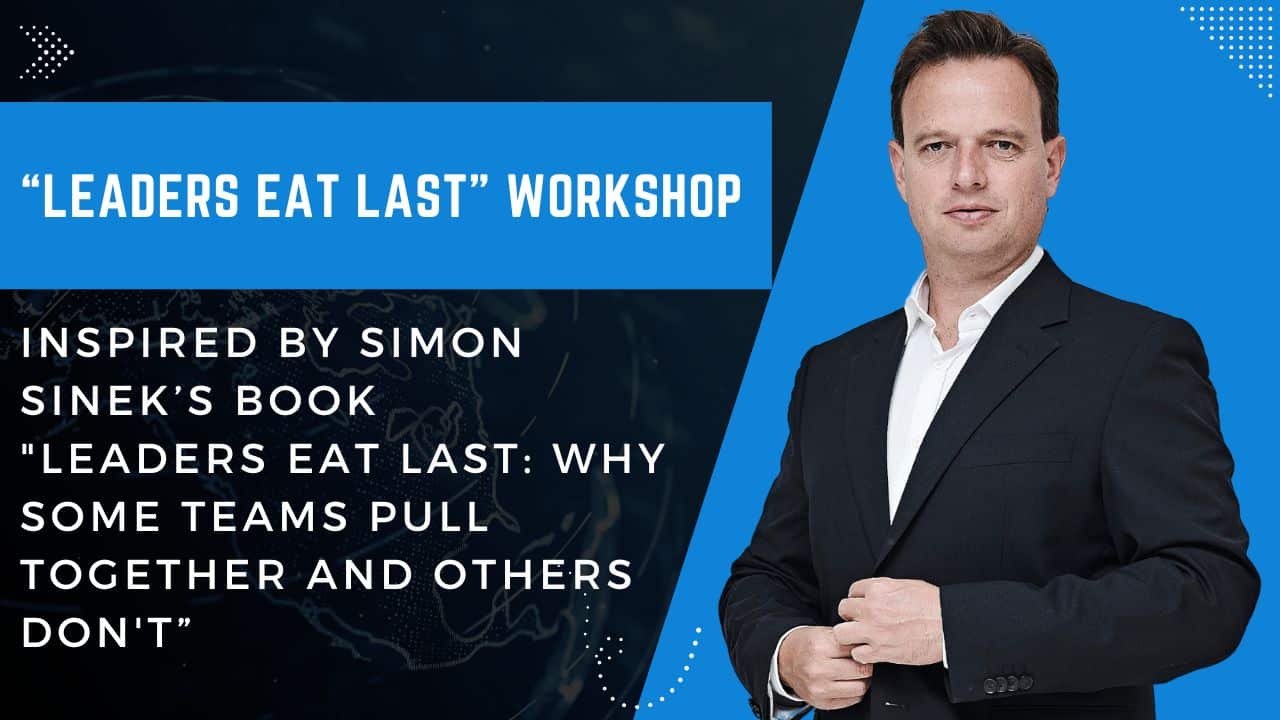
The book Leaders Eat Last: Why Some Teams Pull Together and Others Don't by Simon Sinek has been highly successful since its release.
It became a New York Times bestseller and is influential in leadership and business circles.
As of the latest information, the book has sold over a million copies worldwide.
In Leaders Eat Last, Sinek offers several key insights into effective leadership and team dynamics.
Here are three of the most important takeaways for teams:
The Circle of Safety
Concept: The "Circle of Safety" is a metaphor for the environment leaders create to protect their team members from external threats and internal stresses.
Insight: When leaders extend the Circle of Safety to include all team members, they feel secure and valued, which fosters trust and cooperation. This sense of security allows employees to focus on their work and collaborate effectively.
Empathy and Vulnerability
Concept: Empathy and vulnerability are crucial traits for effective leadership.
Insight: Leaders who show empathy and are willing to be vulnerable build stronger connections with their team members. This openness encourages a culture of trust and mutual respect, which is essential for team cohesion and resilience.
Putting People First
Concept: True leadership is not about being in charge but about caring for those in your charge.
Insight: Effective leaders prioritize the well-being of their team members over their own interests. Doing so inspires loyalty and dedication, leading to higher performance and morale.
Here's a simple 3-step workshop based on these insights from Leaders Eat Last.
This workshop is designed to foster a sense of trust, collaboration, and effective leadership within teams.
Step 1: Understanding the Circle of Safety
Objective: Introduce the concept of the "Circle of Safety" and its importance in building trust and cooperation.
Activity:
- Presentation (15 minutes): Start with a brief presentation explaining the "Circle of Safety" concept from Simon Sinek's book. Highlight how leaders create a safe environment where team members feel secure and valued, encouraging them to collaborate and take risks without fear of repercussions.
- Discussion (15 minutes): Engage the participants in an open discussion about their experiences with feeling safe or unsafe in a team environment. Ask them to share examples of positive and negative experiences and how they impacted their performance and well-being.
Materials Needed:
- PowerPoint slides or a whiteboard for the presentation.
- Discussion prompts (download these for free below).
Step 2: Building Trust Through Vulnerability
Objective: Demonstrate how vulnerability from leaders can build trust within a team.
Activity:
- Exercise (20 minutes): Pair participants and have them share a personal story revealing some level of vulnerability. This could be a challenge they’ve faced or a mistake they’ve made and what they learned from it.
- Group Reflection (10 minutes): Bring everyone back together and discuss how sharing these stories made them feel. Highlight that leaders showing vulnerability can strengthen trust and openness within the team.
Materials Needed:
- Prepared prompts for story sharing (included in the free download below).
Step 3: Putting People First
Objective: Reinforce the importance of prioritizing team members' well-being and development.
Activity:
- Workshop (20 minutes): Divide participants into groups of 3-4 and have them brainstorm specific ways to put their team members first in their daily work. This could include actions like providing regular feedback, recognizing achievements, or supporting professional development.
- Action Plan (10 minutes): Each group presents their ideas, and the participants create a consolidated action plan they can implement in their teams.
Materials Needed:
- Flip charts or large paper sheets for brainstorming.
- Marker pens.
- Handouts with a template for the action plan (included in the download).
Summary and Closing
Objective: Wrap up the workshop by summarizing the key takeaways and setting the stage for ongoing practice.
Activity:
- Summary (5 minutes): Recap the main points from each workshop step.
- Commitment (5 minutes): Ask each participant to write down one specific action they will take to implement the insights from the workshop in their team.
Materials Needed:
- Summary notes.
- Index cards or small sheets of paper for commitments.
By following these steps, participants will understand the three most important principles from "Leaders Eat Last" and how to apply these insights to create stronger, more cohesive teams.
That’s it for today.
I hope you enjoyed it.

